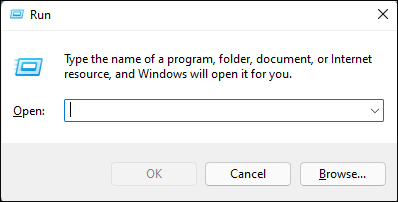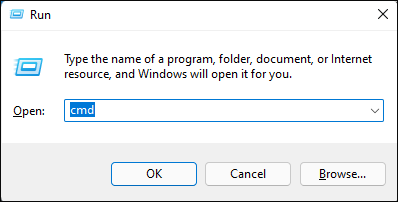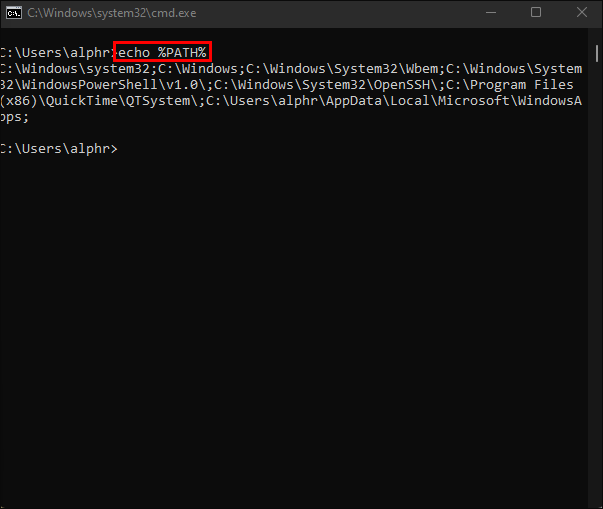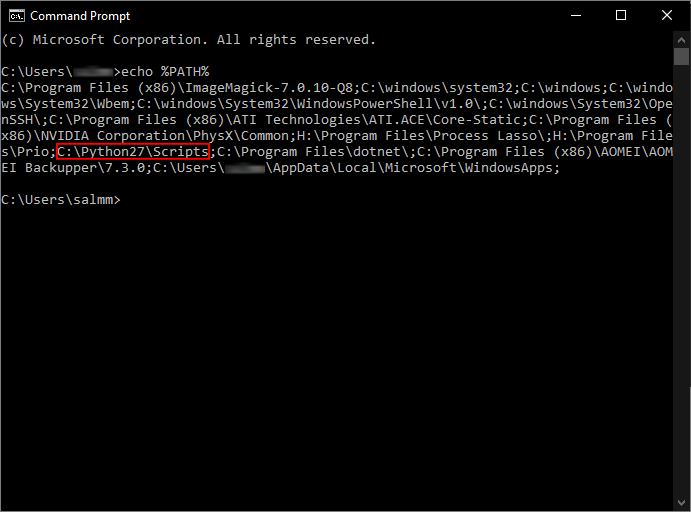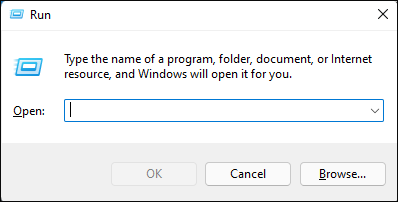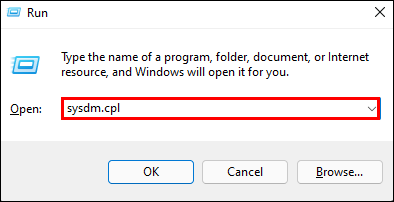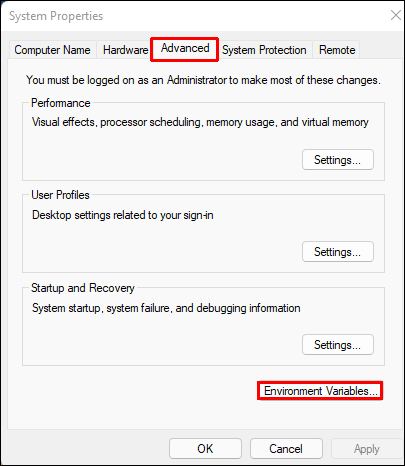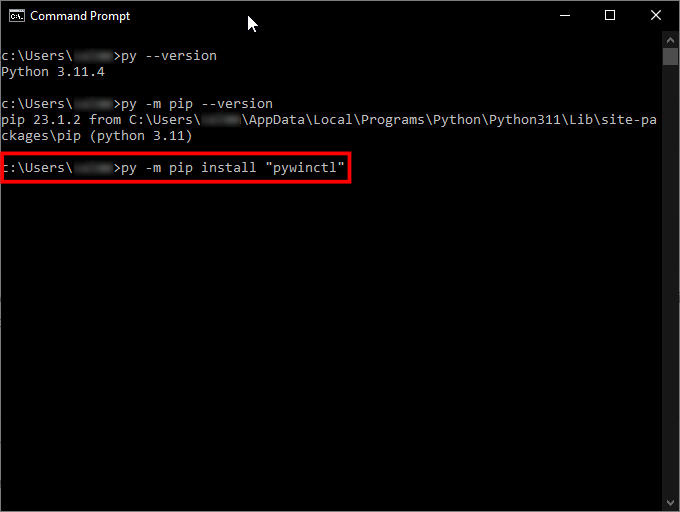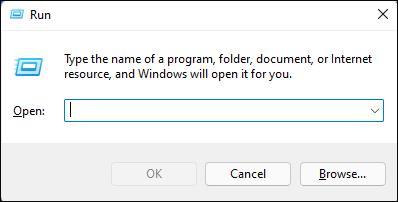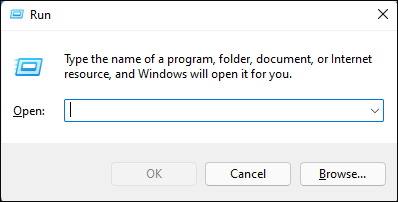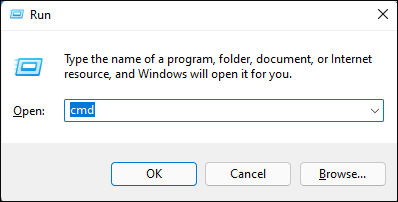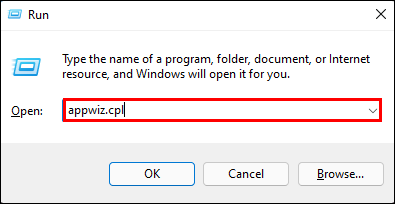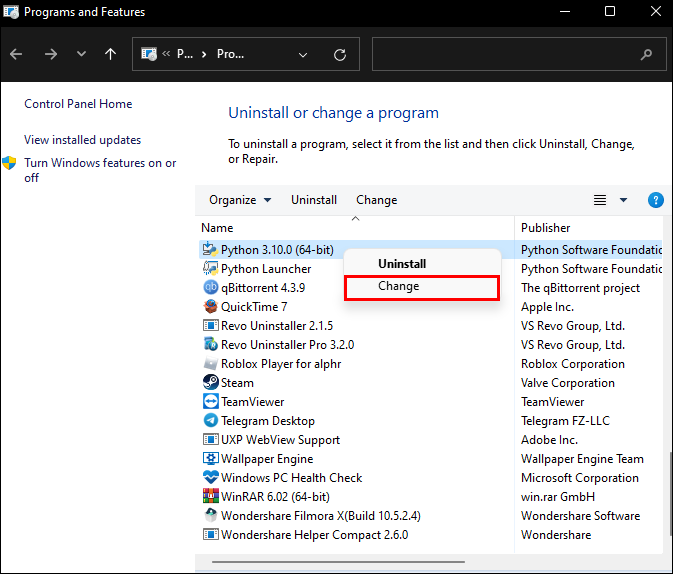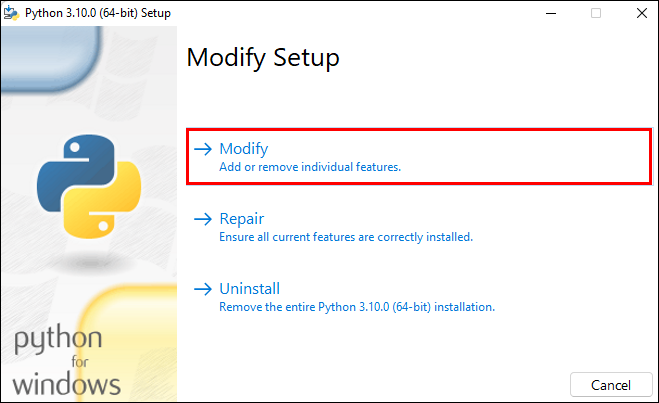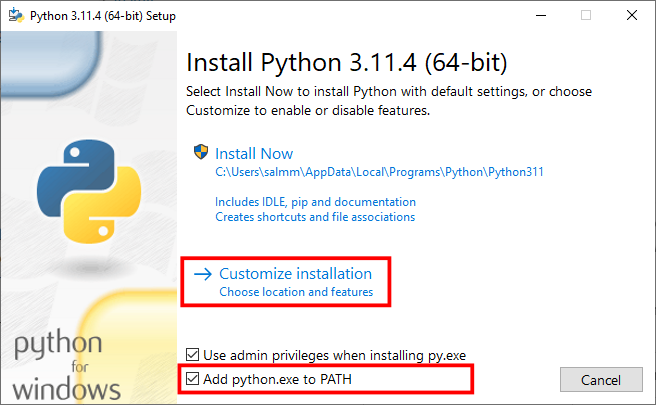Author:
Joel Gray
Published: 18 October 2023
Read Time: ~2 minutes
Are you sick of adding “python -m” to the beginning of your pip install commands?
Or maybe you’ve reinstalled python and realise that now you have to write “python -m pip install package” instead of just “pip install package”?
This short and simple blog will show you how to add pip to your system’s environment path, which means it will know how to find pip without prefixing it with “python -m”.
For macOS and Linux:
1. Locate pip Installation:
• Run the following command in your terminal to find where pip is installed:
python -m site --user-base
• Note the path returned, e.g., /home/username/.local.
2. Modify the PATH Environment Variable for this session:
• Append /bin to the path obtained, e.g., /home/username/.local/bin.
• For a temporary modification, run:
export PATH="$PATH:/home/username/.local/bin"
3. Modify the PATH Environment Variable permanently:
• For a permanent modification, add the above line to your ~/.bashrc (for Linux) or ~/.bash_profile (for macOS) file:
echo 'export PATH="$PATH:/home/username/.local/bin"' >> ~/.bashrc
source ~/.bashrc
4. Verify the Modification:
• Open a new terminal window and run:
pip --version
For Windows:
1. Locate pip Installation:
• Run the following command in your Command Prompt to find where pip is installed:
py -m site --user-site
• Note the path returned, e.g., C:\Users\Username\AppData\Roaming\Python\Python39\site-packages.
2. Modify the PATH Environment Variable:
• Navigate to the Scripts directory which is a sibling to the site-packages directory, e.g., C:\Users\Username\AppData\Roaming\Python\Python39\Scripts.
• Copy this path.
3. Add the Path to the Environment Variables:
• Right-click on ‘This PC’ or ‘My Computer’ on your desktop or in File Explorer, and select ‘Properties’.
• Click on ‘Advanced system settings’.
• Click on ‘Environment Variables’.
• Under ‘System variables’, scroll down and select the ‘Path’ variable, then click on ‘Edit’.
• Click on ‘New’, and paste the path copied earlier.
• Click ‘OK’ to close each window.
4. Verify the Modification:
• Open a new Command Prompt window and run:
pip --version
PIP stands for “Preferred Installer Program” or “Pip Installs Packages” and is a standard package manager for Python that enables users to install and manage additional libraries and dependencies not included in the standard Python library. To use PIP, you must install Python on your Windows machine.
This article provides a step-by-step guide on how to install and configure PIP on Windows, along with tips for managing Python packages effectively.
Prerequisities:
- Windows (11, 10, 8 , 7)
- Python (version 3.13.1)
- Admin Rights
Verify Python Installation
Before installing PIP, you need to ensure that Python is already installed on your system. You can check this by running the following command in the command prompt
python --version
If it is installed, You will see something like this:
Python 3.13.1
If it is not installed, you can install it with the help of this article: How to install Python on Windows.
To get more knowledge about Python packages or modules, get hands-on in our Python course. This course will offer you basic to advanced insights into Python programming.
Installing Python PIP on Windows
Installing pip in Windows is very easy. You just need to follow the given steps to install pip and some additional steps to finally use it. By these steps, we can see how to pip install on Windows. To ensure proper installation and use of pip we need to tick this checklist to install pip Python:
- Download PIP
- Install PIP
- Verify Installation
- Add pip to environment variables
1. Download PIP
To install PIP, you’ll need the get-pip.py script. Let’s understand this in the below-mentioned detailed steps:
Method 1. Install Python pip using Python cURL
Curl is a UNIX command that is used to send the PUT, GET, and POST requests to a URL. This tool is utilized for downloading files, testing REST APIs, etc.
Note: It will download the get-pip.py file.
Follow these instructions to pip windows install:
Step 1: Open Command Prompt
Press Win + R and type CMD and hit the enter button to open the cmd terminal using the Windows keyboard shortcut or alternatively, click on Start Menu and type “Command Prompt” and hit the enter button.
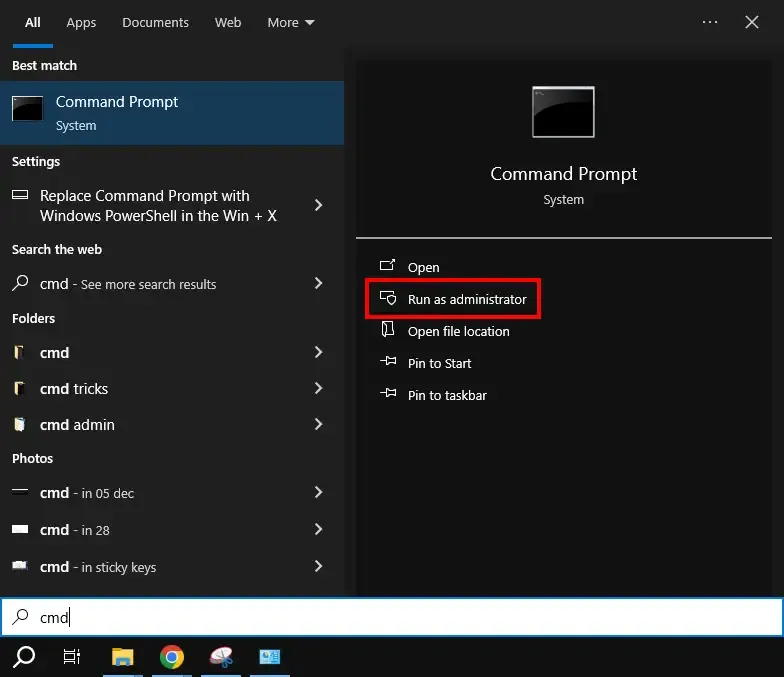
Start Menu – Command Prompt – Run as admin
2. Installing PIP
Here, we have now used cURL to transfer the data requests, let’s check out the executed command in here:
Step 2: Transfer Data Request from a Server
In python, a curl is a tool for transferring data requests to and from a server. Use the following command to request:
https://bootstrap.pypa.io/get-pip.py
python get-pip.py
Method 2. Manually Download and Install Python PIP on Windows
Python pip must be manually installed on Windows. We can pip install in Python by manually installing it. You might need to use the correct version of the file from pypa.io if you’re using an earlier version of Python or pip. Get the file and save it to a folder on your PC.
1.1 Download PIP
This is another method for downloading PIP manually. Let’s check down the steps below:
Step 1: Download the get-pip-py Script
Download the get-pip.py (https://bootstrap.pypa.io/get-pip.py) file and store it in the same directory as Python is installed.
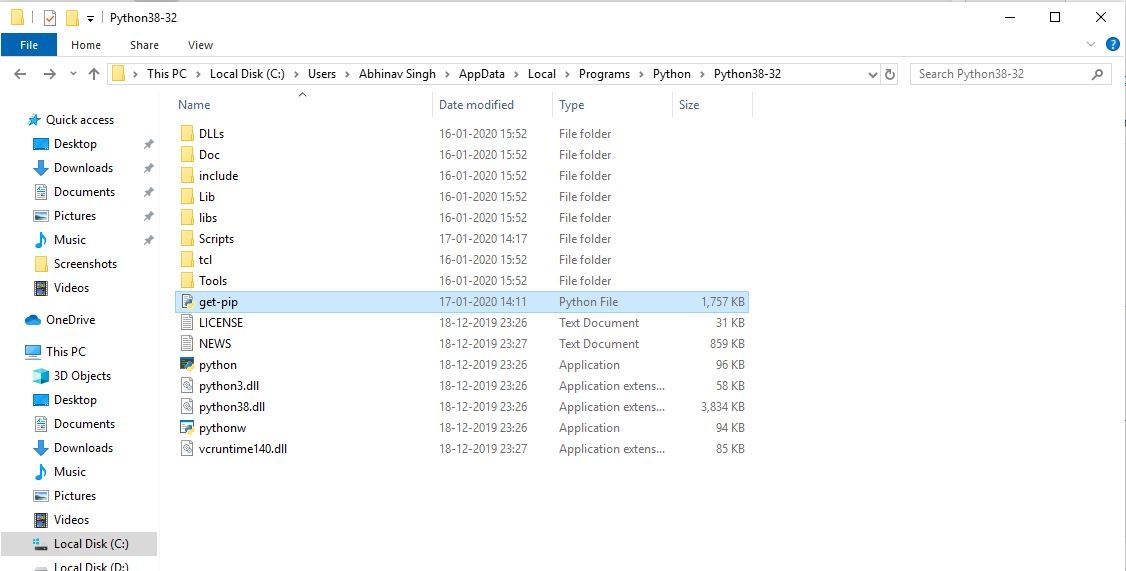
Step 2: Change the Directory
Change the current path of the directory in the command line to the path of the directory where the above file exists.

2.2 Installing PIP
Now, in the next two steps, we will understand how you can install PIP in Python environment. Let’s check them out:
Step 3: Execute the command to Install Python
get-pip.py is a bootstrapping script that enables users to install pip in Python environments. Here, we are installing pip python3. Run the command given below:
python get-pip.py
Step 4: Wait Untill You Get the Confirmation
Now wait through the installation process. Voila! pip is now installed on your system.

3. Verify the PIP Installation
One can easily verify if the pip has been installed correctly by performing a version check on the same. Just go to the command line and execute the following command:
pip -Vorpip --version

4. Adding PIP to Windows Environment Variables
If you are facing any path error then you can follow the following steps to add the pip to your PATH. You can follow the following steps to adding pip to path Windows 10 and set the Path:
Step 1: Locate te PIP installation directory
- You are likely to get this in: C\Python33\Scripts\
Step 2: Add to the PATH
- Go to System and Security > System in the Control Panel
- On the left side, click the Advanced system settings link.
- Then, select Environment Variables.
- Double-click the PATH variable under System Variables.
- Click New, and add the directory where pip is installed, e.g. C:\Python33\Scripts\ and select OK.
Step 3: Verify
- Open the command prompt and type the following command to verify the PIP installation:
pip --version
How to Upgrade Pip On Windows
pip can be upgraded using the following command:
python -m pip install -U pip
How to Downgrad PIP on Windows
It may happen sometimes that your current pip version is not supporting your current version of python or machine.
To fix that, you can downgrade your pip version with the help of Python pip install command and the following command.
Note: You can mention the version you want to install
python -m pip install pip==17.0
If you followed these steps, you will not face any issues while installing pip on windows. We have also discussed methods to upgrade or downgrade pip version in case you face any issues.
Managing Python Packages with PIP
Once PIP is installed, you can use it to manage Python packages. Here are some common commands:
- Install a Package: To install a package, use:
pip install package_name - Uninstall a Package: To remove a package, use:
pip uninstall package_name - List Installed Packages: To see all installed packages, use:
pip list - Show Package Information: To get detailed information about a package, use:
pip show package_name - Search for Packages: To search for packages in the Python Package Index (PyPI), use:
pip search package_name
Troubleshooting Tips
1. Python Not Recognized
Always ensure that Python is added to the PATH during the installation. In case, if it’s not, you can modify the PATH manually.
2. Permission Errors
Try running the Command Prompt as an administrator access.
3. SSL Errors
Ensure that te date and time is correct of your system (as SSL certificates usually relies on actual system clocks.)
Also Read
- How to install PIP in Linux?
- How to install pip in macOS?
- Download and install pip Latest Version
Conclusion
By following this guide, you can successfully download, install, upgrade, downgrade, and manage PIP on Windows seamlessly. With PIP installed in your system, you can easily manage to Python packages and enhance your Python development environment. Whether you’re a beginner or an experienced developer, understanding how to work with PIP is essential for efficient Python programming.
Pip, also known as “PIP Installs Packages,” is a package organization system to install and operate Python software packages. Yes, it’s “Installs” and “Packages” with an “s.” It’s typically used for Python Package Index packages.
When installing Python packages, many users report receiving the message “‘pip’ is not recognized as an internal or external command” and aren’t sure how to troubleshoot. If you’re seeing this error, read on for tips on how to fix it.
The Causes for ‘Pip ‘is Not Recognized as an Internal or External Command Operable Program or Batch File
Let’s look at the two most common reasons for this error:
Reason #1: The Pip Install is Not in the System Variable
For Python commands to run from a Windows Command Prompt, the path of your pip install will need to be added to your “PATH” system variable. It should be added automatically if you obtained Python via the installation file.
Reason #2: The Installation Was Not Added to Your PATH or System Variables
If you’ve manually added the path, the problem could be a typo. One missing semicolon or an extra space somewhere will produce an error.
How to Fix ‘Pip ‘is Not Recognized as an Internal or External Command in Windows 10 or Visual Studio Code
If you see this error message when working in Windows or with Visual Code, it usually means a problem exists with the Python installation or the PATH has not been set correctly. Try the following tips to fix the issue:
Fix 1: Ensure Pip Was Added to Your PATH Variable
If you’re confident that pip got added to the PATH variable, move on to “Fix 3.” If not, continue here.
- Press “Windows key + R.” to open the “Run” dialog box.
- Type”
cmd"and press “Enter.” - For a list of all the locations added to your PATH variable, type “
echo %PATH%“ without quotes into the command prompt, then press “Enter.” - The path was successfully added to the PATH variable if you find something like “C:\Python39\Scripts” (with the number depending on your Python version).
If pip hasn’t been added, try the next fix.
Fix 2: Add Pip to the PATH Environment Variable
There are two ways to add pip to the PATH environment variable—System Properties and the Command Prompt.
How to Add Pip to PATH Environment Variable using System Properties
- Open the “Run” dialog box by pressing the “Windows key + R.”
- Type in“
sysdm.cpl“ and press “Enter” to access “System Properties.” - Select the “Advanced” tab, then click “Environment Variables.”
- Go to the “System variables” section and select “Path,” then click the “Edit” button at the bottom.
- Click “New,” then add your “pip installation path” followed by “Enter,” and then select “OK” to save it and close the window. The default location is: “C:\Python##\Scripts” with actual numbers, but your location and file version may differ.
- Once the path has been added, restart Windows (IMPORTANT), open a new command window, then try to install a pip package to see whether the problem was solved.
How to Add Pip to PATH Environment Variable using the Command Prompt
- Press “Windows key + R.” to launch the “Run” dialog box.
- For a new command prompt window, type “
cmd"and then hit “Enter.” - Type the following command (with your actual path following the semicolon) and press “Enter” to run it:
setx PATH "%PATH%;C:\Python39\Scripts"
Fix 3: Open the Python Package Without Adding the Pip Variable
Follow these steps to open Python install packages in CMD without adding the pip variable:
- Press the “Windows key + R” to open the “Run” prompt.
- Type”
cmd"and press “Enter” to open the Command Prompt. - Enter the following command for Python 3 (with the package name that uses pip), then press “Enter” to run it:
py -m pip3 install "package name"
Fix 4: Ensure Pip is Included in the Installation
Some Python installers exclude pip from the default installation. You can fix this by changing the Python installer to include pip, and here’s how:
- Press the “Windows key + R” to open the “Run” prompt.
- Type “
appwiz.cpl“ and press “Enter.” - In the “Program and Features” window, right-click “Python” and choose “Change.”
- Select “Modify.”
- In “Optional Features,” check the “pip” box and press “Next.”
- In the “Advanced Options” window, ensure “Add Python to environment variables” is checked.
- To apply the changes, click “Install.”
- When the installation is complete, open “Command Prompt” and verify whether you can install a Python package that uses pip without receiving the error.
If you still see the error, head to the last section of this article for steps to uninstall and reinstall Python.
This error usually means a problem with the Python installation exists, or the system variable PATH is not set up correctly. Try reinstalling Python and all its components to fix the problem. The easiest way is via the Python executable installer. Here’s how to do this:
- Press “Windows key + R” to open the “Run” dialog box.
- Type “
appwiz.cpl“ to get to the “Programs and Features” window. - Scroll down the installed programs list to find the Python installation, NOT the launcher.
- Right-click it and select “Uninstall,” then follow the instructions.
- Once Python is removed, restart your computer (IMPORTANT) and download the latest Python installer for your OS.
- Execute “python-3.##.#-amd64.exe” (or whatever installer you downloaded) by double-clicking the file or using the Command Prompt.
- Ensure “Add Python 3.## to PATH” is checked at the bottom, then choose “Customize Installation.”
- In the “Optional Features” section, ensure the “pip” option is checked, then click “Next.”
- The default location can be left as is, but ensure “Add Python to environment variables” is checked, then click “Install.” You can also check off “Install Python 3.xx for all users” if desired.
- Once the installation is complete, install a Python 3 package that uses pip to see if the installation process works by typing the following:
py -m pip install "Project Name Here"
Pip is Now Recognized
The “‘pip’ is not recognized as an internal or external command” error message is a common scenario. The cause usually boils down to the path of the pip install being unavailable or being added incorrectly to the system variable PATH. You can manually add it via Command Prompt or System Properties, change the Python install to include pip, or uninstall and reinstall Python and ensure the “pip” option and adding it to environmental variables are checked.
pip is a package management tool for Python that allows you to install and manage software packages from the Python Package Index (PyPI). The name pip originated as an acronym for Pip Installs Packages.
Most modern Python versions include pip by default. However, if it is missing, you can install it manually.
This guide will explain how to check if pip is installed, install it using two different methods, and upgrade or configure it on Windows.
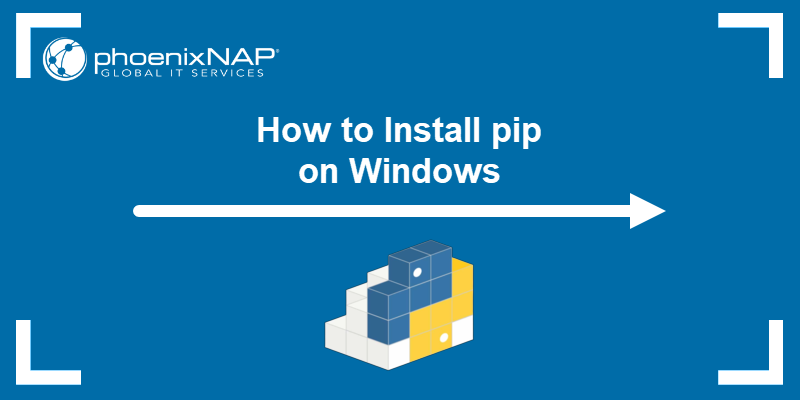
Prerequisites
- A Windows system.
- Access to Command Prompt or PowerShell.
- Python installed and added to PATH.
Note: Python is usually preinstalled on Windows. If not, the easiest method to get it is with Windows Package Manager. To install Python with winget, run: winget install Python.Python.
Check if pip Is Installed on Windows
Python’s latest versions include pip, but some installations may not. Before installing pip on Windows, check if the system already has it.
Launch the command prompt and type the following command:
pip --version
If pip is installed, the output displays the installed version. In case the system responds with an error message like the one above, follow one of the methods in this tutorial to install it.
Method 1: Install pip on Windows Using ensurepip
The ensurepip module is built into Python and can install pip if it’s missing. It’s useful in environments where pip was not included by default, such as embedded Python installations.
To install pip, run the following command:
python -m ensurepip --upgrade
After the installation completes, verify the pip installation with:
pip --version
Method 2: Install pip on Windows Using get-pip.py
To install pip using this method, download the get-pip.py script using curl, then run it. Follow the steps below to install pip using this method.
Step 1: Download pip get-pip.py
Download the get-pip.py script with the following command:
curl https://bootstrap.pypa.io/get-pip.py -o get-pip.py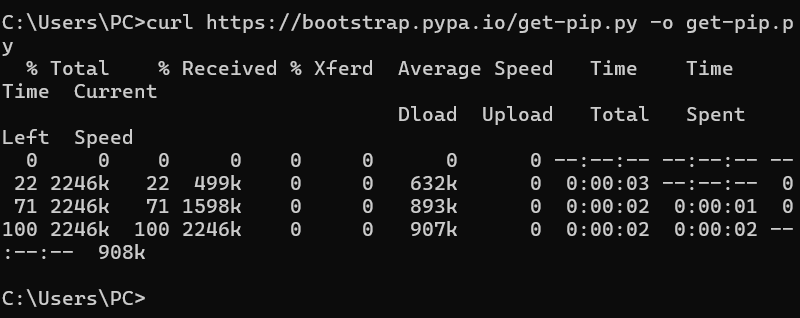
Note: To check if the link in the command is up to date, visit the official site for get-pip.py. If you can access the file directly and it doesn’t print any errors, the link is still valid.
Step 2: Install pip on Windows
If you used the get-pip.py script to download pip, run the following Python command to install it:
python get-pip.py
Note: In some cases, get-pip.py outputs the installation location. If this happens, note the PATH to use when adding pip to your system’s PATH variable.
Step 3: Verify Installation
To test whether the installation was successful, type the following command:
pip --version
Step 4: Add pip to PATH
To run pip from any location and as a standalone command, add it to Windows environment variables.
Before modifying environment variables, check whether pip is already in your system’s PATH. Run this command:
where pip
If the command returns a valid PATH, skip this step. If the command cannot find the PATH, it returns the error:

Follow these steps to add pip manually:
1. Locate the pip installation directory, which is, by default, in the Scripts subdirectory of your Python installation. A typical path is:
C:\Users\[YourUsername]\AppData\Local\Programs\Python\PythonXX\ScriptsReplace [YourUsername] with your actual Windows username and PythonXX with the Python version.
In this tutorial, the path is:
C:\Users\PC\AppData\Local\Programs\Python\Python313\ScriptsNote it because you will need it in the coming steps.
2. Open the Start menu, search for Environment Variables, and press Enter.
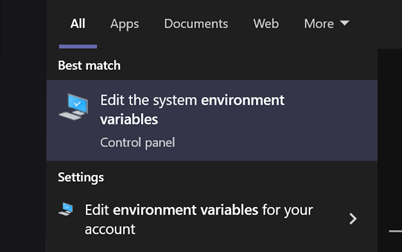
3. Click the Environment Variables button.
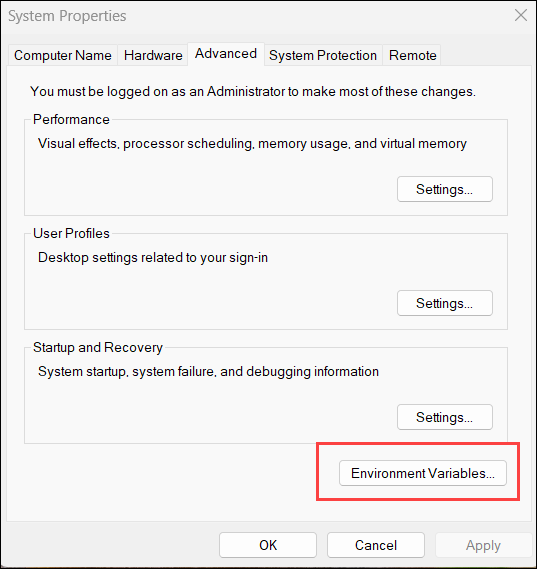
4. Double-click the Path variable to edit it.

Note: Modify User variables for a single user or System variables to apply changes for all users.
5. Select New and add the directory where pip is installed, which you located and noted earlier,
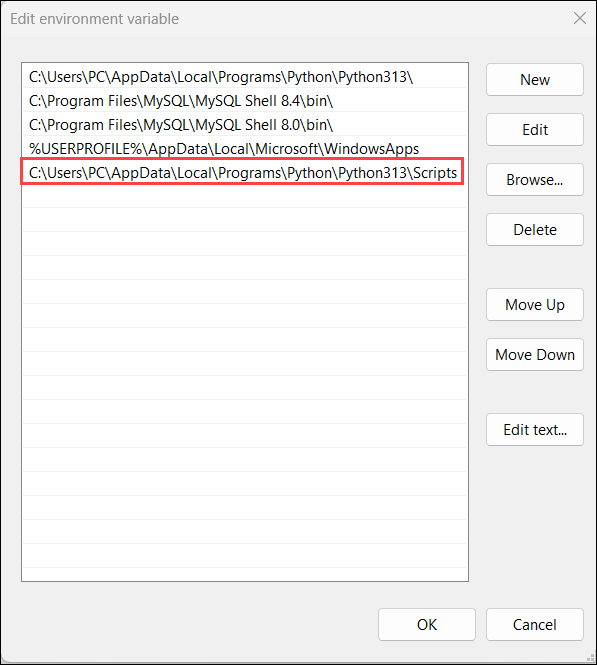
6. Click OK to save the changes.
7. Open a new command prompt session and run the following command to test the changes:
pip help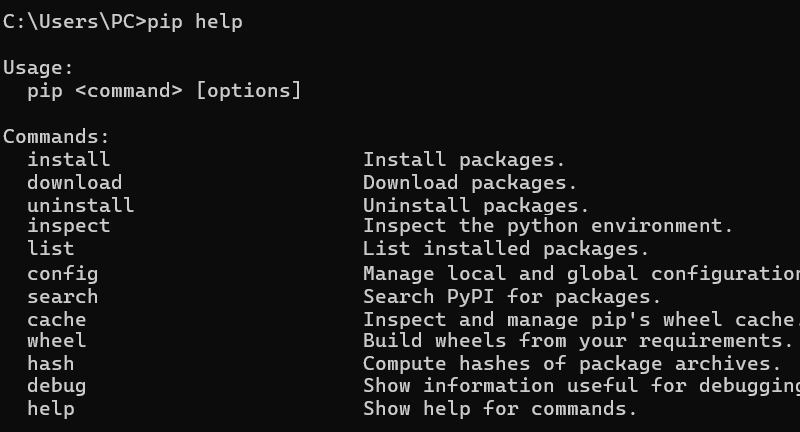
If the command does not work, try using pip3 instead of pip. Alternatively, add the directory where Python is installed to PATH and repeat the process.
Step 5: Configuration
The configuration file for pip exists in several locations on the system, including global, user-specific, and site-specific paths.
The configuration provides insight into how pip is set up and helps find installation problems or unexpected behavior.
To see the current configuration settings, run:
pip config -v list
The command shows the possible global, user, and site locations for the pip.ini configuration file. If you need to adjust pip’s behavior, edit the appropriate pip.ini file based on these locations.
Upgrade or Downgrade pip on Windows
New versions of pip are released occasionally. These updates improve functionality or are necessary for security purposes.
To upgrade pip on Windows, run:
pip install --upgrade pipDowngrading is necessary if a new version of pip starts performing badly. To downgrade pip to a prior version, specify the version you want.
Use the following syntax:
python -m pip install pip==[version_number]Conclusion
This guide explained two ways to install pip on Windows and elaborated on how to add pip to PATH when necessary. Additionally, it showed how to upgrade or downgrade pip.
Next, check out our guide and learn how to install NumPy, a powerful Python library for numerical computing, using pip.
Was this article helpful?
YesNo
According to Statista, Python is the 4th most used programming language in the world (in 2022). Programmers often install it on their Windows computers to develop applications. However, we have seen users report that they often encounter trouble when trying to install or modify the Python packages using the “PIP” command.
The most common error reported amongst developers is the following:
Pip is not recognized as an internal or external command.
The Pip Installation Packages (PIP) is a Python package management system used to install and manage its software packages. However, while using it to perform certain tasks, like installing another package using the command “pip install Django”, the aforementioned error is encountered.
In this post, we are going to address this issue so that you may continue with your Python development as planned.
Table of Contents
Why is Pip Command Not Found in Windows
When a user encounters the “Pip is not recognized as an internal or external command” error, it is due to one of the following reasons:
- Pip has not been added to the environment variables.
- The pip environment variable has incorrect values.
Environment variables are variables that can be used across your system. Just like in programming, variables contain a value that can be changed or called when needed. Environment variables are the same, but can be used across the entire scope.
When pp is not recognized, it is probably because the command line is unable to call on the actual program because of the missing or incorrect path.
Let us show you how to check whether a path for “pip” is present inside the Windows environment variables list.
How to Check Environment Variable for Pip
The most convenient method to check that pip was added to the PATH variable is using the Command Prompt. Follow these steps to check whether it is present or not:
-
Launch an elevated Command Prompt.
-
Run the following cmdlet:
echo %PATH% -
Ensure that a similar path is present in the presented variables:
C:\Users\[Username]\AppData\Local\Programs\Python\PythonXXX\Scripts
Check if the Python environment variable exists using Command Prompt The username and the “XXX” are dependent upon your user account name and the installed Python version.
You can also view the environment variables from the Settings app, and through PowerShell.
If you find that such a variable doesn’t exist, then it means that the issue is caused because of a missing pip variable in PATH. However, if one does exist, then it is likely that its value is misconfigured.
Either way, continue to perform the following mitigation tasks to correct the error and get on with your Python development.
Fix PIP Not Recognized in Windows
Add Environment Variable for PIP
This section covers 2 ways to add the environment variable for PIP. Of course, you only need to perform this if the Python directory did not show up in the list of environment variables when you checked for them using the Command Prompt above.
Add PIP Environment Variable using System Properties
This method shows how to add the PIP environment variable to PATH using Windows GUI.
-
Open the System Properties applet by typing in “sysdm.cpl” in the Run Command box.
Open System Properties applet -
Switch to the Advanced tab.
Open Advanced tab -
Click “Environment Variables.”
Open Environment Variables -
Under the System Variables section, select “Path,” and then click Edit.
Edit PATH -
From the popup window, click New.
Add new environment variable -
Now enter the path for the PythonXXX directory, as in the following image:
Enter path for Python directory Note: You can use File Explorer to navigate to the Python directory and copy the correct path from there.
Copy path using File Explorer -
Now click New again and enter a second path for the Scripts directory.
Enter path for Scripts directory -
Click Ok on all windows to save the changes.
The environment variables will now be added to PATH.
Add PIP Environment Variable using Command Prompt
You can also add the PIP environment variable using the Command Prompt in just a few commands. Here is how:
-
Launch an elevated Command Prompt.
-
Use the following cmdlet while changing the [Username] and [XXX] with your account name and Python version to add the PIP environment variable to PATH:
setx PATH “%PATH%; C:\Users\[Username]\AppData\Local\Programs\Python\PythonXXXAdd path to Python directory using Command Prompt
Edit Environment Variable for Python
If the Python directory did show up when you were checking the variables list, and the PIP command still isn’t working, then it is probably misconfigured.
Use the following steps to edit the existing PATH variable:
-
Open the System Properties applet by typing in “sysdm.cpl” in the Run Command box.
Open System Properties applet -
Switch to the Advanced tab.
Open Advanced tab -
Click “Environment Variables.”
Open Environment Variables -
Under the System Variables section, select “Path,” and then click Edit.
Edit PATH -
Select the Python entry and click Edit.
Edit the path -
Repeat the steps above for the other path (if needed).
-
Click Ok on all windows to save the changes.
Ensure PIP is Included in Python Installation
Python has different components installed. Ensure that PIP is one of the installed components using these steps:
-
Open the Programs and Features applet by typing in “appwiz.cpl” in the Run Command box.
Open Programs and Features applet -
Right-click Python and then click Modify from the context menu.
Modify Python installation The modification wizard will now launch.
-
Click Modify.
Select Modify -
Make sure that “pip” is selected, then click Next.
Ensure “pip” is selected -
Now ensure that “Add Python to environment variables” is selected, and then click Install.
Add environment variables Any newly selected packages and variables will now install.
-
When the installation completes, close the wizard.
Close the modification wizard
If this resolution did not work for you, you can try and reinstall Python all together.
Reinstall Python with PATH Variable
Another workaround for the error prompt is to reinstall Python on your PC. When installing Python, it gives you the option to place the environment variables into PATH.
Follow these steps to uninstall Python and then reinstall it properly.
-
Open the Programs and Features applet by typing in “appwiz.cpl” in the Run Command box.
Open Programs and Features applet -
Right-click Python and then click Uninstall.
Uninstall Python The uninstallation wizard will now run and remove Python from your PC.
-
Close the wizard and restart the computer.
Close uninstallation wizard -
Now download the Python setup and run it.
-
From the installation wizard, select “Add pythno.exe to PATH” and then click “Install Now.”
Add PATH for Python and install The installation will now begin.
-
When installed, close the wizard.
Close the installer
A fresh environment variable path has now been added to the system. Check to see if your issue has been resolved and that PIP is recognized now.
Install Python Package without PIP Variable
If none of these solutions have worked for you, then another workaround is to install a Python package without adding the PIP variable. It can be done using a simple cmdlet in Command Prompt.
-
Launch an elevated Command Prompt.
-
Use the following cmdlet to install a Python package while replacing [PackageName] with the name of the package:
python -m pip install [PackageName]Install Python package without PIP variable
As you can see in the image above, the Django package has been installed without adding the pip variable in PATH.
Final Words
The Pip Installation Packages is a crucial command for managing Python libraries and packages. Therefore, you need to ensure that it is working correctly on your PC in order to maximize productivity.
Let us know which method from above worked for you in resolving the issue.

